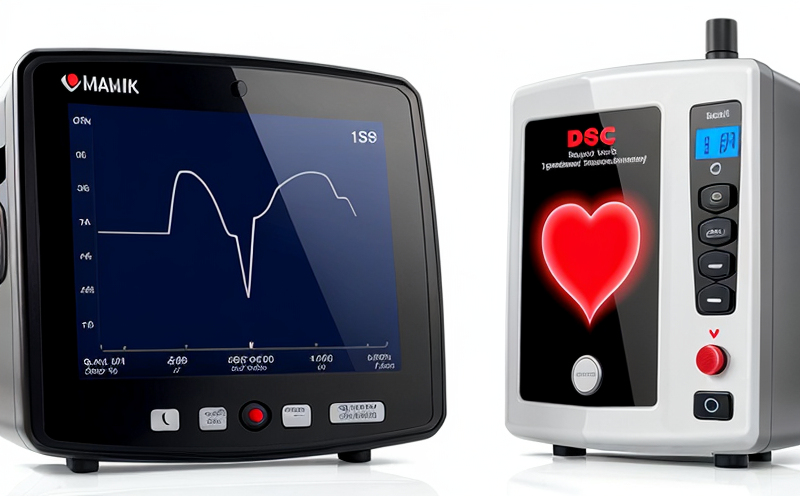ISO 7198 Vascular Prosthesis Burst Strength Testing Validation Method Development Test
The ISO 7198 standard provides a validated and internationally recognized procedure for determining the burst strength of vascular prostheses, which is crucial in ensuring their safety and reliability. This test measures how much pressure can be applied before a vascular prosthesis fails under stress, thereby assessing its durability and integrity. Burst testing is essential to ensure that medical devices meet stringent quality standards and regulatory requirements.
In this service, we specialize in validating the method for burst strength testing of vascular prostheses according to ISO 7198. Our team works closely with clients to develop, validate, and implement the most accurate and efficient testing protocols. The process involves a comprehensive understanding of the specific device characteristics, including material composition, geometry, and intended use.
Our validated methods are designed to provide consistent results across different laboratories, ensuring that all parties involved in the development, manufacturing, and regulatory approval processes can rely on standardized test procedures. This is particularly important for medical devices, where consistency and repeatability are paramount. Our expertise lies in translating these internationally recognized standards into practical, reliable testing methodologies.
The validation process includes several critical steps: selecting appropriate materials and specimens, establishing baseline parameters, conducting pilot tests to refine the protocol, and finalizing the method for production use. Throughout this process, we adhere strictly to ISO 7198 guidelines, ensuring that all procedures are conducted in a controlled environment with precise instrumentation.
Our laboratory is equipped with state-of-the-art burst testing machines capable of applying high-pressure loads on vascular prostheses without causing damage or deformation. These machines allow us to simulate real-world conditions under which the devices will be used, providing accurate and reliable data for analysis. The results from these tests are then compared against predefined acceptance criteria established by ISO 7198.
Following successful validation, we provide detailed reports that document every aspect of the testing process, including setup procedures, operational parameters, observed outcomes, and conclusions drawn based on those observations. These comprehensive documents serve as valuable resources for regulatory submissions, internal quality control measures, and ongoing research projects related to vascular prostheses.
By offering this specialized service, we help our clients achieve compliance with global standards while enhancing product performance through rigorous testing practices. Our goal is not only to meet but exceed expectations set forth by governing bodies like the International Organization for Standardization (ISO), ensuring that each device undergoes thorough evaluation before reaching market.
- Our team of experienced engineers and scientists brings deep expertise in cardiovascular engineering and materials science, leveraging this knowledge to tailor custom solutions for our clients' unique needs.
- We maintain strict adherence to international standards throughout the entire validation process, ensuring that all steps comply with ISO 7198 requirements.
- Our laboratory adheres to stringent quality control measures, guaranteeing accurate and precise results from each burst strength test conducted here.
Applied Standards
The ISO 7198 series of standards specifically addresses the testing methods for determining the burst strength of vascular prostheses. These include guidelines on specimen preparation, test setup, and data analysis techniques that ensure consistent results across various laboratories worldwide.
In addition to ISO 7198, we also adhere to other relevant international standards such as ASTM F2063-18a, which provides additional insights into testing procedures for vascular grafts; EN ISO 5164:2007, concerning the mechanical properties of plastics used in medical devices; and IEC 60601-2-3, focusing on electrical safety aspects pertinent to medical equipment.
By incorporating these complementary standards into our work, we ensure that our validated methods not only meet but exceed current regulatory expectations. This holistic approach allows us to provide comprehensive support for our clients' compliance efforts and product development initiatives related to vascular prostheses.
Quality and Reliability Assurance
Our commitment to delivering accurate, reliable data extends beyond just performing tests; it encompasses the entire lifecycle of a validated method. From initial consultation with our clients regarding their specific requirements up until final certification, we implement robust quality assurance measures at every stage.
We employ rigorous validation protocols that involve multiple repetitions and cross-verification to confirm repeatability and reproducibility of results. Regular audits are conducted internally by our team members who possess extensive experience in both academia and industry settings. These internal reviews help us identify potential areas for improvement while maintaining high standards.
Additionally, we collaborate closely with external partners such as regulatory agencies and certification bodies to stay updated on any changes or updates regarding these standards. By doing so, we ensure that our validated methods remain current and compliant with evolving industry norms.
Competitive Advantage and Market Impact
- Innovation Leadership: By being at the forefront of validating cutting-edge technologies against established standards, we enable our clients to stay ahead in their competitive landscape. Early adoption of validated methods allows them to bring innovative products to market faster.
- Enhanced Reputation: Adherence to recognized international standards enhances a company’s reputation among peers and stakeholders alike. It demonstrates commitment to maintaining high ethical standards during product development.
- Cost Savings: Streamlined validation processes reduce costs associated with rework or failure during later stages of production when issues arise due to insufficient testing early on.





